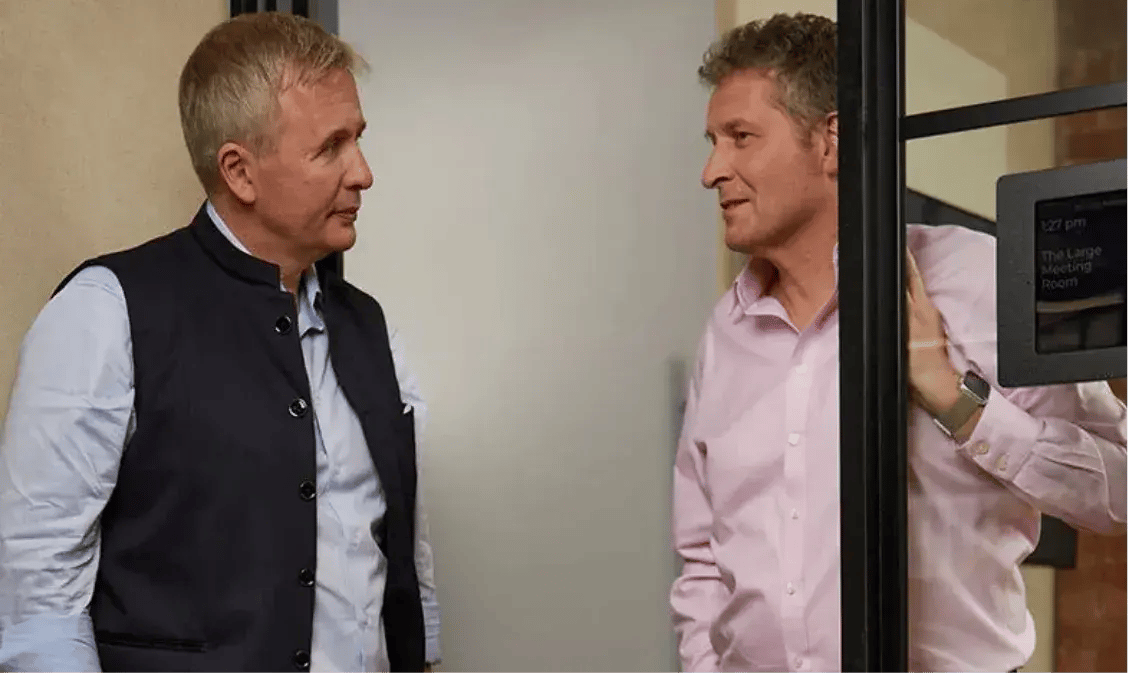Teamship in a VUCA environment
How to thrive in an uncertain market.
Content
Introduction: Teamship In A VUCA Environment
In a Volatile, Uncertain, Complex, and Ambiguous (VUCA) business environment, the one certainty that businesses have to fall back on is their teams. It’s almost a cliché to say that a company’s employees are its most valuable asset, but this is never truer than in the context of a VUCA environment. Political instability, international conflict, and the connected economic impact can collide to create an environment that is very difficult for organisations to navigate. Yet every organisation has the potential to optimise its team resources through a well-crafted approach of teamship.
What is teamship and why does it matter?
The concept of ‘teamship’ is a synergy between team collaboration and leadership and is a more proactive and stakeholder-based approach to managing teamwork. This can make a fundamental difference in the organisation's ability to lead in VUCA environments. By engaging individual team members, throughout the organisation to take full creative and collaborative ownership of their roles, your teams can grow to become more cohesive, innovative, agile, and resilient in the face of change. They build their ability to adapt to their changeable context.

In this guide from Centre for Teams, we will look at a VUCA environment in more detail, its impact on an organisation and how teamship can help you navigate the challenges of a VUCA environment – not only surviving but thriving – both now and in the future.
Understanding VUCA and its impact on Your Teams
In the last few years in Western Europe, it has been common to hear terms like volatility, uncertainty, complexity, or ambiguity when discussing the modern business landscape. Modern businesses have to grapple with swift technological advancements, enduring economic and political fluctuations, an unpredictable global landscape, scarcity of skills, and complexities in supply chains. These hurdles, among others, demand significant attention and effort from teams to comprehend and navigate effectively.
But in many respects the market has always been like this. VUCA in one way or another is a fact of life for many businesses in part because of the nature of their work (consider oil and gas, emergency healthcare provision), and the ones that are most agile, with the flexibility and inner strength to respond to the challenges and opportunities presented by change, are the ones that stand the test of time. It is teamship that gives organisations this agility, without which many businesses struggle to adapt, and as a result slip into irrelevance or insolvency when change inevitably occurs. At this time all organisations are needing to live in a VUCA world.

The Reality of VUCA

VUCA environments can be particularly disruptive because they impact businesses at every level, not just organisationally but also personally. Social, cultural, and economic events deeply affect individuals, and despite the professionalism most people exhibit, there is often an underlying impact on team dynamics and collaboration. These changes could be slow and incremental, or drastic and sudden.
The more rapidly that environmental changes occur, the more extreme and disruptive the shifts in team behaviour could be, eventually affecting company culture, authority structures, productivity, mindset, and the business’s response to ambiguity and uncertainty.
The reality of VUCA, and what makes it so critical for effective leaders and teams to grasp, is that the changes in team dynamics are often not felt until the situation has reached a critical point, at which point a solution may be difficult or impossible.
Think about what happens when you heat a kettle. From the outside, it can seem as if nothing much is happening for several minutes. The water is heating up slowly and seemingly steadily until, almost out of the blue, the kettle starts to boil, hissing and bubbling, shaking, and overflowing at the spout.
This physical process, of applying heat to a substance, gives us an appropriate understanding of how VUCA environments impact systems, particularly within organisations. At first glance, systems—whether they are teams, departments, or entire organisations—may appear stable, coping with external pressures in a controlled manner. The gradual build-up of stress and pressure within the system often goes unnoticed, as the changes are incremental and not immediately visible.
However, beneath the surface, these pressures are accumulating, much like the heat within the kettle. The system is absorbing the volatility, uncertainty, complexity, and ambiguity, gradually moving towards a critical threshold. The stability that once seemed assured begins to erode, though this erosion is not always apparent until the system reaches a tipping point.
Chris’ Story
VUCA environments can have a similar impact on teams. The team seems to be successfully managing and integrating change, until it isn’t, and then the accumulated pressure forces a sudden and dramatic shift in their behaviour and dynamics. Chris, a partner and director at Centre for Teams, provides a compelling illustration of this phenomenon.
Reflecting on his experience as a soldier in Northern Ireland during the 1990s, Chris recounts a pivotal moment that transformed his platoon's understanding of their situation. Despite extensive training and awareness of the inherent dangers, it wasn't until their first real "contact"— an attempt to harm them — that the true gravity of their circumstances fully registered.

This moment of realisation catalysed a dramatic shift in the team's behaviour and mindset, galvanising the platoon and instilling a newfound focus and drive. They gained clarity about their individual and collective responsibilities, recognising that their survival and success hinged not only on their skills and training, but also on their ability to support one another under intense pressure.
Chris's story illustrates just how quickly high-pressure situations can trigger significant changes within a team on almost a fundamental level. This shift in attitude and approach exemplifies the essence of teamship in a VUCA environment — teams must quickly adapt, understand the gravity of their circumstances, and work collaboratively to navigate through uncertainty.
VUCA Challenges Faced by Businesses
As described, modern businesses operate in an environment where volatility, uncertainty, complexity, and ambiguity are the norm rather than the exception. These challenges span multiple domains, from regulatory shifts to technological disruptions, and require businesses to develop robust, adaptive strategies to survive and thrive. The global nature of the economy means that a change in one part of the world affects another and more rapidly than ever before. Let’s look at some of these changes with the VUCA lens.
.webp?width=626&height=360&name=Centre%20For%20Teams%20Ebook%20-%20Teamship%20In%20A%20Vuca%20Enviroment%20How%20to%20thrive%20in%20an%20uncertain%20market%20(4).webp)
Regulatory Changes and Supply Chain Vulnerabilities:
One of the most pressing VUCA challenges is the unpredictable nature of regulatory changes. For instance, the introduction of stringent data protection laws like GDPR has forced companies to swiftly overhaul their data management practices, often at significant cost and operational disruption. Similarly, supply chain vulnerabilities have been starkly exposed by recent global events such as the COVID-19 pandemic, highlighting the need for resilient and flexible logistics networks.

Evolving Workforce Dynamics and Consumer Behaviour:
Workforce dynamics present another layer of complexity, with the rise of remote work and changing employee expectations from different generations, necessitating new approaches to talent management and organisational culture. Consumer behaviour shifts, driven by technological advancements and cultural changes, add further uncertainty to the business environment. Companies must now navigate rapidly evolving consumer preferences, such as the growing demand for sustainable products, while simultaneously tackling emerging threats like cybersecurity risks.
Environmental, Market, and Political Pressures:
Environmental concerns and political instability also contribute to the VUCA landscape, compelling businesses to balance innovation with risk management. As technology continues to advance at an unprecedented pace, the threat of obsolescence looms large, pushing organisations to continuously adapt and reinvent themselves to remain relevant in an increasingly competitive marketplace.
To successfully navigate these diverse challenges, businesses must constantly adapt, balancing the demands of a rapidly changing environment with the need for stability within their teams. It’s no wonder, then, that VUCA environments are capable of exerting such significant pressure on the psychological well-being of said teams.
The Psychological Impact of VUCA Environments
The reasons that VUCA environments are so disruptive to businesses are rooted in humanpsychology. ‘Change management strategies’ are necessary because change doesn’t comeeasily to human beings. We are drawn to environmental stability and predictability, and sovolatility, uncertainty, complexity, and ambiguity can trigger anxiety and stress.
Volatility
Regular and unpredictable changes can trigger high levels of anxiety among your team.Frequent shifts in direction and priorities can leave colleagues feeling overwhelmed andanxious, unsure about their roles and performance expectations.
Uncertainty
A lack of clear information andpredictability increases stress levels.When team members (and leaders) areunsure about the future outcomes orstability of their roles and projects, theirability to plan ahead and executeeffectively is hindered.
Complexity
The requirement to manage complex andinterconnected problems without obvioussolutions is stressful for many people. Thecognitive load required to navigate thesecomplex situations can also increasemental fatigue, pushing up the chance ofburnout, physical sickness, and anxiety-related mental health conditions.
Ambiguity
In an ambiguous situation, team membersonly have access to incomplete orcontradictory information, making itdifficult to create a coherent strategy, orfind common ground with their colleagues.This can trigger frustration, stress, andconflict, as the team struggles to findclarity and direction.
Decision Paralysis
If unaddressed, chronic anxiety and stress can escalate into decision paralysis, in which decision-making becomes challenging or impossible. Decision paralysis arises from the flight, fight, or freeze instinct, in which the fear of making the wrong choice amid uncertain circumstances prevents individuals or teams from moving forward when faced with a critical decision.
Decision paralysis can erode the morale of employees and damage the credibility of leadership in the eyes of colleagues. It also makes it more difficult for teams to respond proactively and agilely to market changes and disruptions, resulting in inefficiency and missed opportunities.
VUCA and the Kubler Ross Change Cycle
The Kubler Ross change cycle was developed by psychologists to describe the stages of griefbut is also applicable to how teams respond to change within VUCA environments. The cycleincludes the following stages:
.webp?width=1139&height=569&name=Centre%20For%20Teams%20Ebook%20-%20Teamship%20In%20A%20Vuca%20Enviroment%20How%20to%20thrive%20in%20an%20uncertain%20market%20(9).webp)
Denial
Unwilling to acknowledge the new conditions, individuals may cling to old processes and resist change, in the hope that issues will resolve themselves.
Anger
Frustration and irritability towards the situation sets in, and team members may direct this anger towards their leadership, their colleagues, other departments, or the business itself for creating or allowing the environment to arise.
Bargaining
Individuals attempt to regain control of the situation by negotiating or making deals to avoid the full impact of change. This is expressed in temporary fixes aimed at simplifying complexity and reducing ambiguity.
Depression
Feelings of fatigue and helplessness can emerge in teams once individuals realise that
bargaining does not significantly improve the problem. This stage is marked by decreased
productivity, low morale, and poor staff retention.
Acceptance
Eventually, individuals begin to accept the realities of the new environment and begin to develop positive strategies to adapt to cope with the changes, becoming more open to new and innovative ways of working.
Thrive in Uncertainty: Download Our Guide on Building Strong Teams in a VUCA World

Discover how your team can not only survive but thrive in volatile, uncertain, complex, and ambiguous environments.
Download your free guide and discover:
And more…
Please confirm your details to get your copy.
Get Your Free Copy
Teamship Strategies in a VUCA Environment
From a leadership perspective, managers and leaders should recognise any emerging VUCA situation as quickly as possible and take steps to analyse the potential impact on their teams. Actions should then be put in place to address any risks and challenges proactively, while establishing the structures to positively deal with expressions of anger, frustration, and depression.
Longer term, systemic changes are preferable to short-term or temporary fixes, which can ultimately increase frustration among the team, rather than reduce it. However, effective VUCA management should also include techniques for short-term planning, minimising disruption while initiatives to improve team adaptability and resilience have time to take effect.
.webp?width=1131&height=1143&name=Centre%20For%20Teams%20Ebook%20-%20Teamship%20In%20A%20Vuca%20Enviroment%20How%20to%20thrive%20in%20an%20uncertain%20market%20(10).webp)
Characteristics of a strong VUCA team
From a leadership perspective, managers and leaders should recognise any emerging VUCA situation as quickly as possible and take steps to analyse the potential impact on their teams. Actions should then be put in place to address any risks and challenges proactively, while establishing the structures to positively deal with expressions of anger, frustration, and depression.
Longer term, systemic changes are preferable to short-term or temporary fixes, which can ultimately increase frustration among the team, rather than reduce it. However, effective VUCA management should also include techniques for short-term planning, minimising disruption while initiatives to improve team adaptability and resilience have time to take effect.

1. Adaptability
Adaptable teams have the flexibility to adjust quickly to changing circumstances and pivot their strategies as needed.
Actions:
Implement agile methodologies to respond to customer and stakeholder feedback, new technologies, and market changes. By holding regular reviews and retrospective sessions, teams can adjust their service delivery model and prioritise the features that deliver the most value

2. Good communication:
Transparent, respectful, and open communication channels within the team and between the team and management improves the flow of information throughout the organisation and reduces ambiguity and stress.
Actions:
Cloud-based collaborative tools can help keep team members informed about product updates, responsibilities, and deadlines. To reinforce this consensus, weekly or even daily meetings can be held during volatile situations to discuss progress, issues, and hurdles, keeping team members on the same page and proactively addressing frustration and morale issues as they arise
.webp?width=1132&height=831&name=Centre%20For%20Teams%20Ebook%20-%20Teamship%20In%20A%20Vuca%20Enviroment%20How%20to%20thrive%20in%20an%20uncertain%20market%20(13).webp)
3. Trust:
Teams that trust each other to perform their tasks effectively and make good decisions have greater confidence in their abilities and are less susceptible to decision paralysis. A team with mutual trust is also better placed to recognise and manage the symptoms of stress and anger before they escalate into conflict.
Actions:
Encouraging the assumption of trust – called ‘swift trust’, can be a critical first step in any team. In a VUCA environment, this is especially important because it encourages individuals to trust themselves to make decisions because they feel supported by their teammates. Managers and leaders can then build on that base level of trust by encouraging regular sessions for the team to look at how it is working together. We call this a ‘learning rhythm’ and it sits next to an operating rhythm.
In these sessions, the team, at times with support, can build relationships, build their own support networks in the team, and ask for and offer support to solve complex problems and to find solutions inherent in a VUCA world. This is where the team as a whole can build trust and move through the change curve, accepting what they are dealing with and moving forward.
This also builds interdependence – and without interdependence, the team will fail as a team and be unable to cope with the pressure of a VUCA environment.

4. Psychological safety:
‘Psychological safety’ is a crucial element of team dynamics. It is an environment in which individuals feel safe to express their opinions, take risks, and admit mistakes without fear of victimisation or retribution. If people don’t feel safe, they may emotionally and practically withdraw in on themselves and not feel confident enough to take the initiative when required. This can be especially damaging in VUCA environments once the effects of stress, anxiety, and uncertainty take their toll on decision making.
Actions:
Encourage regular brainstorming and feedback sessions, in which all team members are invited to share their thoughts and perspectives. Managers should actively listen and validate contributions, creating an environment where creativity and innovation can thrive. Communication protocols should also set best practices for how team members communicate among each other, preventing unconscious bias and victimisation.

5. Shared vision:
A team with a shared vision has a common understanding and commitment to their collective and organisational goals, and they understand how their individual efforts contribute towards team objectives. In a VUCA contact this can be a useful lodestar for the team, giving a sense of control and direction.
Actions:
An effective way of laying the foundations for a shared vision is by writing a team mission statement together, and from this, establishing clear and measurable goals. Team Building exercises, role-play, constructive one to ones, and informal team interactions can reinforce this vision, allowing managers to revisit shared goals and keep the team focused and motivated to achieve the required outcomes. The executive team sharing their vision with the organisation can be especially powerful and trigger those who report to them to ensure alignment in their own team’s direction and ethos.

6. Resilience:
Resilient teams have built their capacity to recover more quickly from setbacks and perform well under pressure. This includes the ability to prioritise and delegate tasks, communicate clearly with colleagues, and make confident decisions in volatile situations. Resilient teams don’t have any fewer problems than their less resilient counterparts, but deal with setbacks more effectively, and experience fewer symptoms of anxiety and stress.
Actions:
When faced with a blow – such as the loss of a major client – it’s easy for a team to dwell on the loss and become demoralised. Recognising this, a teamship strategy should face the situation proactively and square on, allowing the team to quickly regroup, analyse what went wrong and any mistakes that were made, and develop a strategy to move on. This increases the team’s ability to learn from setbacks and deal with future challenges with greater confidence and agility.
7. Continuous Learning:
An organisation-wide commitment to ongoing personal and team-based professional development helps individuals keep pace with changing technologies and market conditions. A culture of continuous learning also makes individuals feel more valued and supported by management, increasing their morale and resilience when things get tough.
Actions:
Individual team members should be encouraged to act autonomously and take leadership to the full extent that their roles allow. For example, junior team members could be given the opportunity to lead projects and make supported decisions about design or implementation.
All team members should also be given access to CPD and career development opportunities. When managed correctly, this teamship approach can accelerate project timelines and create a greater sense of ownership and accountability throughout the team.
Providing Critical Care in A VUCA Scenario
A prime example of all of what we’ve described so far can be seen in how a client in the care sector responded to the challenges brought on by the COVID-19 pandemic and the subsequent lockdown. The organisation quickly narrowed its focus to three primary goals: keeping those they support alive, ensuring the safety and health of colleagues, and developing an organisation fit for the post-crisis environment. The CEO referred to the organisation's response as a "battle rhythm," characterised by frequent meetings that were informed by critical data, helping the team make crucial financial and operational decisions. This approach was effective during the initial weeks of the crisis until a more stabilised situation allowed for a shift in strategy.

The organisation then implemented a phased plan, consisting of:
Recognition and Recuperation allowing colleagues to share feedback.
Reconciliation focusing on learning.
Restitution getting back to a new normal
Reform adapting to the new environment.
Reset ensuring the goals and infrastructure supported the new plans

The COVID-19 pandemic presented a classic VUCA scenario, with rapid changes, uncertainty about the future, complex challenges, and ambiguous outcomes. Here’s how the leadership in this case exemplified effective management in such a context:
Volatility - Rapid Decision-Making:
The leadership responded to the sudden onset of the pandemic and lockdown by quickly narrowing their focus to essential goals: preserving life, ensuring colleague safety, and preparing for the post-crisis future. This quick prioritisation helped manage the volatility by stabilising immediate concerns.
Uncertainty - Creating a 'Battle Rhythm':
The CEO established a structured approach with frequent, data-driven meetings to guide decision-making. By regularly reassessing the situation and basing decisions on critical, real- time data, they were able to reduce uncertainty and make informed choices.
Complexity - Phased Response:
The leadership responded to the sudden onset of the pandemic and lockdown by quickly narrowing their focus to essential goals: preserving life, ensuring colleague safety, and preparing for the post-crisis future. This quick prioritisation helped manage the volatility by stabilising immediate concerns.
Ambiguity - Adaptability and Reflection:
The organisation’s focus on reflection and reform indicates their willingness to learn and adapt as the situation evolved. They didn’t just react to the immediate crisis but also took steps to reassess and adjust their strategy, showing an understanding that ambiguity requires flexibility and continuous learning.
.webp?width=372&height=200&name=Centre%20For%20Teams%20Ebook%20-%20Teamship%20In%20A%20Vuca%20Enviroment%20How%20to%20thrive%20in%20an%20uncertain%20market%20(19).webp)
Their approach at its heart encouraged the executive team to accept the challenges the environment brought, accept the VUCA world it was in, and therefore lead the organisation. Once done, movement became possible, and they were able to lead the organisation through a turbulent time for them and the world around them.
Find out more
The Centre for Teams is a business coaching and team development specialist based in London, with clients across the UK and worldwide in a variety of markets. Established in 2003, we empower our customers to adapt and thrive through exceptional teamship, regardless of external circumstances and challenges. To find out more about teamship and how a personalised teamship strategy can help your organisation navigate VUCA environments successfully and profitably, please contact the Centre for Teams today by giving us a call on 020 7014 8410 or via email at info@centreforteams.com.


